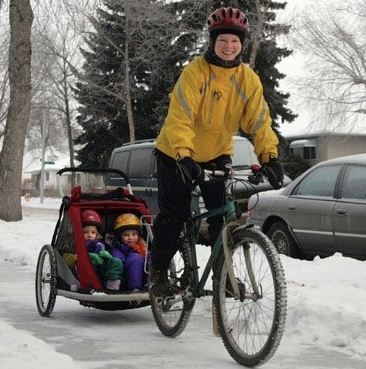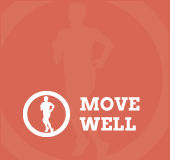Cold Weather Bicycling Tips

Layer It Up
Your personal comfort has a big impact on year-round riding, so dress for the weather. When it’s cold or wet, wear layers. This is an effective way to combat changing temperatures and other weather conditions. Three layers tend to work best.
- First – a snug base layer made from a material that will wick away moisture from the skin. Look for materials like polypropylene, wool, silk or a synthetic product such as Thinsulate. Wicking away moisture reduces the evaporative cooling effect that sweating has on your body.
- Second – the insulator, which should be slightly looser than your base layer. This will trap air near the skin, and your body warms this air and keeps it there to help you stay warm. The insulating layer can be made of a variety of materials depending on weather conditions: synthetics, wool, fleece and down are some that work well.
- Third – an outer shell should be made of a wind-blocking and water-resistant material like Gore-Tex or Windstopper that will protect you from wind and exterior moisture, but still allows perspiration to escape to keep you dry.
Protect the Extremities
Hands and feet are often the first to get cold because our extremities do not regulate temperature well. You might need hand and foot coverings in a variety of thicknesses and materials to adequately protect you in cold or wet conditions. Check out options in gloves, booties, toe-covers and arm and leg warmers.
Protect the Head
An uncovered head means you are losing heat. Wear an insulated cap under your helmet. Some riders even use a ski or snowboard helmet since it is insulated and still offers protection. If you layer under a helmet, just be sure you are not compromising your vision or safety. Along with the helmet, you might want to consider goggles, especially in wet conditions, to help with visibility.
Warm Up the Muscles
Warming up before exercise is always a good idea, but it is especially important when you are going to be out in cold weather. Cold temperatures constrict your vessels and arteries, which limits the blood flow to areas that need it. Give your warm-up routine a little extra time to give your body a chance to heat up. For example, if you normally spend 10-15 minutes warming up, increase that to 20-25 minutes.
Other Quick Tips:
- Stay Hydrated
- Check Road and Trail Conditions
- Wear Reflective Material and Use Lights (important as it gets darker earlier!)
- Keep Your Bike in Shape (check tires, brakes, etc. before you ride)
You might be surprised to know that some of the most bike-friendly cities are places known for serious winters – like Minneapolis (Minnesota), Madison (Wisconsin) or Vancouver (Canada). If roads and bike paths are clear and dry, you shouldn’t have any major problems using them for a daily commute or recreational ride. Just be sure to take your time and pay attention.





















